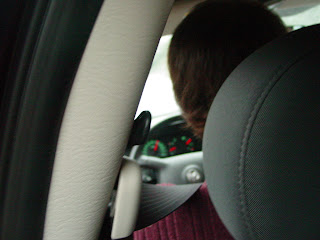Learning Prejudice: Influence of Parents and Peers
 One of the earlier sections in our prejudice and stereotypes course concerned how prejudices and stereotypes begin in children. This was a good set of readings, and I was particularly intrigued by Allport’s ideas on the different stages from which children learn prejudices (i.e., attaching emotions to labels, over-generalization of emotion to all people within a category, differentiation within the category, and then tailoring attitudes to fit self-image, status seeking, and values). His theories about these stages provided the framework for and were supported by research on the cognitive stages associated with category development years later. I think that this attests to how monumental Allport’s book on prejudice was, and why it’s still used as a main text today.
One of the earlier sections in our prejudice and stereotypes course concerned how prejudices and stereotypes begin in children. This was a good set of readings, and I was particularly intrigued by Allport’s ideas on the different stages from which children learn prejudices (i.e., attaching emotions to labels, over-generalization of emotion to all people within a category, differentiation within the category, and then tailoring attitudes to fit self-image, status seeking, and values). His theories about these stages provided the framework for and were supported by research on the cognitive stages associated with category development years later. I think that this attests to how monumental Allport’s book on prejudice was, and why it’s still used as a main text today.
While going through the readings, I became more and more interested in the role of parents in the formation of childhood prejudices (perhaps because I want to become a parent myself one day). Allport (1954) argued for three social mechanisms of acquiring prejudice: learning, conformity, and contact. And he believed that parents were most influential within the realm of “learning." Not only does he argue that children adopt the prejudiced attitudes and ideas from their family environment, he also states that “rejective, neglectful, and inconsistent styles” of parental training lead to children developing prejudice.
Yet, that's a pretty remarkable statement to me. After reading Harris’ The Nurture Assumption: Why Children Turn Out the Way They Do, Revised and Updated (2009) a couple years ago, I was under the impression that parents had little lasting effect on the later personality and attitudes of children when they are grown. As I think Harris would argue, compared to parents, a child’s peer group is more influential on the later personality and attitudes that a child develops as he or she grows. Of course, to a point, parents do have the ability to control a child’s peer group . . . at least at a younger age. As Katz (2003) highlights, parents channel their children into their race beginning at 12 – 18 months. Many parents are likely not providing, nor approving of, access to peers from other ethnic backgrounds. Importantly, Katz explains that parents’ attitudes are indeed a significant predictor of racial bias. High bias children, more often than not, have parents with negative racial views and who don’t talk about other races. I think that this shows some support for Allport’s view. Of course, she also shows that the child’s best friend is a significant predictor of racial bias too. High bias children have more same-race friends.
I think the argument about whether parents or peers have the stronger influence relies too heavily on the explicit racial biases of each, and not on the power of implicit racial biases. Children appear to be very attuned to the non-verbal cues around them. As Castelli et al. (2008) show in their study, preschool children will express negative attitudes towards a Black model when a White model expresses some non-verbal (i.e., implicit) uneasiness over the Black model. This effect occurs regardless of whether the White model expresses any verbal friendliness with the Black model. More importantly, children appear to overgeneralize the negative views. They carry these views over to other Black models who have no relevance to the first situation. It's amazing how powerful implicit racial biases can be. Though, the White model in the experiments were not the children's parents, it is likely that children are picking up on the implicit biases of their parents from an early age.
References and further reading:
Allport, G. W. (1954/1979). The Nature of Prejudice. Perseus Books.
Dovidio, J. F., Glick, P., & Rudman, L. A. (Eds.) (2005). On the Nature of Prejudice: 50 Years After Allport. Malden, MA: Blackwell Publishing.
Bigler, R. S., & Liben, L. S. (2006). A developmental intergroup theory of social stereotypes and prejudice. Advances in Child Development and Behavior.
Cameron, J. A., Alvarez, J. A., Ruble, D., & Fuligni, A. (2001). Children's lay theories about ingroups and outgroups: Reconceptualizing research on prejudice. Personality and Social Psychology Review, 5, 118 - 128.
Castelli, L., De Dea, C., & Nesdale, D. (2008). Learning social attitudes: Children's sensitivity to the nonverbal behaviors of adult models during interracial interactions. Personality and Social Psychology Bulletin, 34, 1504 - 1513.
Harris, J. R. (1999). The Nurture Assumption: Why Children Turn Out the Way They Do. New York: The Free Press.
Katz, P. (2003). Racists or tolerant multiculturalists? How do they begin? American Psychologist, 58, 897 - 909.



1 comment:
Interesting post, greeting from Belgium
Post a Comment